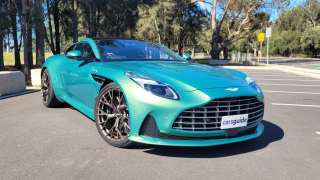
Foolproof parallel parking

What is Parallel Parking?
Australia, you have a problem. It seems like a simple task, but reverse parallel parking (also known as parallel parking or reverse parking in different parts of the globe) intimidates many drivers. This can be from never having been shown properly how to parallel park, poor spatial awareness, or not knowing how physically large your vehicle is.
Most commonly found in metro areas, particularly crowded inner-city suburbs, parallel parking requires co-ordinating reversing a vehicle into a space alongside the kerb, in between two other parked cars. This is normally on the left-hand side of the road, though there are areas, normally one-way streets, where it happens on both sides.
To complete a successful parallel park you should be parallel to, and within 40cm (or 30cm in South Australia and the ACT), of the kerb. This can intimidate novice drivers as traffic builds up while they’re trying to park, or pedestrians wander behind the reversing car, or the driver misjudges the size of the car they’re trying to fit into the space.
Thankfully, avoiding such problems is easy if you read our top parallel parking tips. Read on as we teach you how to parallel park, Australia!
Reverse Parallel Parking Like a Pro
The technique for successful reverse parking takes six basic steps and hinges on knowing roughly where your car needs to be to execute them. There is no sneaky trick to a reverse parallel park; you just need to know the reference points.
Buckle up, here is how to do a perfect parallel park, Australia:
1. First, stop alongside the vehicle sitting ahead of the space you want to park in, and put your indicator on. Your rear wheels should sit alongside with that vehicle’s back wheels.
2. While stopped, swing your car’s steering wheel full lock towards the direction you’re wanting to move into. Do not move or creep while doing this!
3. Slowly start reversing with the steering on full lock (checking the mirrors and over your shoulder for pedestrians) until you can see the front-left corner of the vehicle behind, or until your front wheels are opposite the forward car’s back wheels. Stop and straighten the steering wheel so your front wheels are
pointing straight ahead.
4. Reverse slowly until your outside tyre is directly behind the forward car’s outside tyre (looking ahead).
5. Stop and swing the steering wheel full lock the opposite direction to bring the nose of your car into the space. Continue slowly reversing, checking your mirrors.
6. Once your car is straight in the space you can straighten the steering wheel and adjust your car’s position to ensure it is sitting in the middle of the spot.
Congratulations, you’ve just learned all the reverse parallel parking steps, Australia!
My Car Don’t Swing!
If that technique isn’t working make sure you’re not moving, even very slowly, while you’re turning the wheel. Some adjustments may be necessary if you have an old or very large car that can’t physically turn in a short space like a modern car, but it would be a good idea to practice it and play with positioning your car in each step.
One critical aspect of a good reverse park is ensuring your vehicle is parallel to the kerb, though it doesn’t need to be millimetre perfect. If you can look down the side of your car and see the bootlid of the car ahead then you’re not straight enough and could cop a fine or ticket for not having parked properly!
Computers are here to help
Classic cars are awesome, but anyone who has had to parallel park one in a tight spot knows they can also be a real chore to drive. Compared to late-model machines cars of even 15 years ago by and large didn’t have reverse cameras, electronically adjustable mirrors, and parking sensors.
But you can have this technology retro-fitted by qualified installers! This means that learning how to parallel park is easier than ever, should you not want to get rid of your classic Lightburn Zeta.
If that still sounds all too much for you, then we’d suggest updating to a new car with parking assist technology. Yes, manufacturers have actually solved your problem using computers and boffins!
While it seemed like science fiction you have been able to buy self-parking cars for several years now, and park assist technology comes on all sorts of cars today, from mid-size hatchbacks like the Ford Focus, all the way up to the latest Mercedes-Benz luxury models.
Still, we suggest starting with plastic cones before risking a nice new car!















Comments